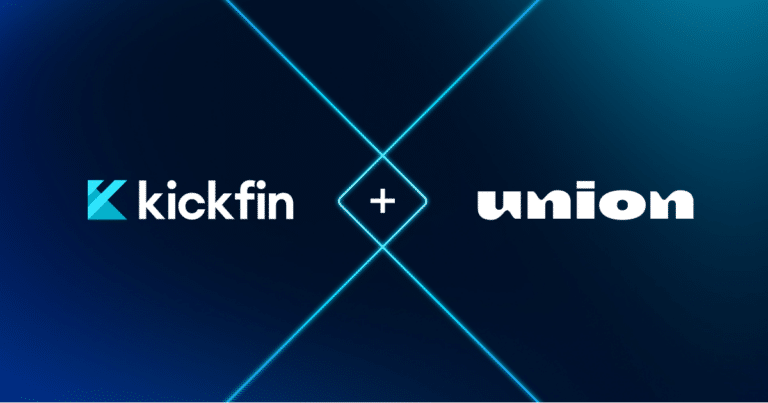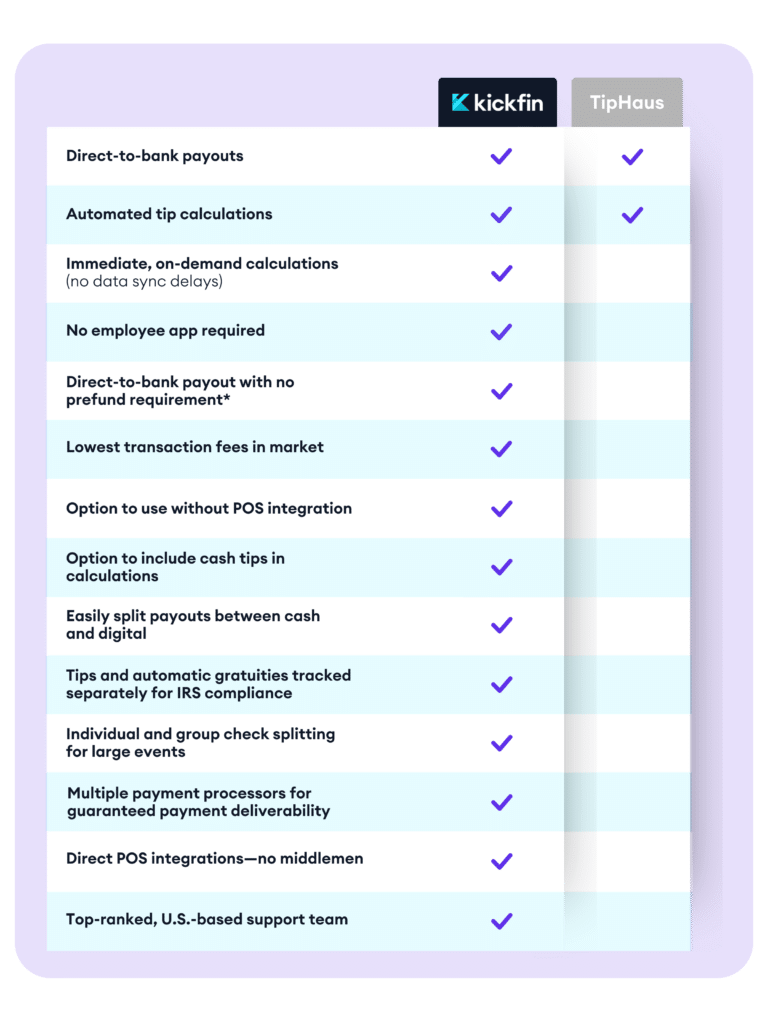For restaurant owners looking to boost teamwork and make sure every employee gets their fair share, a tip pool or tip share seems like a natural solution. But like there are pros and cons to tip pooling that every operator should be aware of.
Of course, it doesn’t always make sense to pool tips. (And when it does make sense, tip pooling policies are definitely not one-size-fits-all!)
If you’re on the fence, check out our tip pooling pro-con list below and consider how they would affect your restaurant’s unique dynamics.
What are the pros of tip pooling?
It takes a lot of hard work and collaboration to deliver an excellent guest experience. For most restaurants, the primary goal of tip pooling is to ensure all employees are fairly rewarded for their contributions.
Here are a few of the benefits that tip pooling offers restaurant teams.
1. Improved performance
When executed strategically, tip pooling can bring your team together around a shared goal — delivering a top-notch guest experience — and reward them for doing so.
And when employees are all working toward a common goal, they’re much more likely to work together and go out of their way to lend a helping hand or fill in gaps. This can be particularly true for tip pools that include employees who generally aren’t directly tipped, like bussers, hosts, and back-of-house employees.

2. Reduced competition among servers
Does one section get all of the large parties (aka all the large tips)? Or does your patio section get too hot for most guests during the summer? When employees aren’t sharing tips, your workplace culture might start to feel (overly) competitive and even lead to tension or disputes. When servers start feeling slighted or get hung up on who-got-which-table, not only does that affect morale — it slows everyone down.
An equitable tip pool can keep servers from feeling like they need to keep score, so they can focus on providing top-notch service to all of the guests in the restaurant.
3. Increased focus on training
When you bring on new staff, you typically have them train with your best veteran servers. And when those vets know that their trainee will be part of their future tip pool, they’ll be more invested in the training, making sure to give them a master class in upselling and customer service.
4. More equitable distribution
Unfortunately, customer biases — conscious or not — can impact tip amounts. Whether based on race, gender, or other factors, this kind of discrimination can affect your employees’ livelihoods.
While restaurant operators can’t control if some employees receive preferential treatment, they can help to compensate for those injustices by pooling and fairly distributing tips.
Cons of Tip Pooling
While most restaurants these days run some form of tip pool or tip share, there are some common drawback and pitfalls to tip pooling, which are worth considering before you implement a new policy
1. Top performers may feel negatively impacted
If your best servers are consistently bringing in far more than the standard 18-20% in tips, they might not be so pleased to share with employees who may not have the same experience, talent or work ethic.
Couple that with the fact that some servers can turn tables much quicker than others, resulting in a higher volume of sales and a whole lot more tip income — well, your top earners could start feeling cheated by the tip pool.
And in a tough labor market, if a hardworking employee isn’t happy with their earnings, they likely have other options.

2. Under-performers can slip through the cracks
On the flip side of that: a tip pool could allow lower-performing employees to slip through the cracks. If you’re not closely evaluating the average tip amount (and average check size!), you may miss that one of your employees is struggling with their customer service.
3. Compliance is an added consideration
Tip pooling is regulated at the federal and (usually) state level. Some municipalities also have their own rules around how to legally pool tips. These laws can get pretty complicated, making it all too easy to fall out of compliance without even knowing it. For example: managers can’t participate in a tip pool; but what happens if a manager is also performing server duties? Can you include back-of-house in your tip pool? Does your eligibility for the tip credit change if you operate a tip pool? It’s important to know the answers to all of these questions and fully understand the laws that apply to each of your locations. (Especially if you have locations in multiple states!)
Tip Pooling Pros and Cons at a Glance
That’s a lot of information to take in, so here it is a handy-dandy pro-con chart.
To Pool or Not to Pool?
The majority of restaurants in the U.S. operate some form of tip pool. At Kickfin, we’ve worked with thousands of restaurant teams who participate in tip pooling or tip sharing. We’ve found that often, the positives outweigh the negatives.
But that comes with a major caveat: the best tip pooling teams have been strategic and intentional with their policies — and as a result, no two tip pooling policies look exactly the same.
If you want to set yourself up for tip pooling success, here are a few general rules of thumb.
- Evaluate your requirements: Ask yourself why you’re running a tip pool. What needs are you trying to address or problems are you trying to fix? Specifically consider your restaurant type, team size, org chart, and local market to find the best policy for you.
- Don’t overcomplicate: It shouldn’t require a degree in calculus to calculate your tip pool. If you feel like it’s getting unwieldy, it’s possible you’re setting your team up for mistakes and tracking issues.
- Get feedback for better buy-in: This shouldn’t be a decision-by-committee scenario, but it’s worth checking with management and even some of your team’s unofficial leaders to get their input before running with a new policy. This can help get the rest of your employees on board.
- Write it down and run it by your counsel: Your tip pooling policy should be on paper, in black and white. You should also have your legal counsel review it to make sure you’re not inadvertently out of compliance with tip pooling regulations.
- Communicate everything: Once you’re feeling good about your policy, share it. Make sure every tip-eligible employee understands how it works and has the opportunity to ask questions.
- Ensure transparency by tracking everything: It’s not enough to share your policy. It’s important that every payout is tracked, including how those payouts were calculated. Not only does that streamline accounting and reporting; it also creates a culture of trust with your employees. If there is ever any question around a payout, having a digital paper trail is invaluable.
The best tip pools are automated
Tip pool calculations often happen in a spreadsheet, which is less than ideal. Kickfin integrates with your POS, so you can eliminate spreadsheet math, reducing the risk of human error and ensuring every payout is accurately calculated and tracked. Plus: Kickfin customers can send instant, cashless payouts directly to their employees’ bank of choice.
The result: All the benefits of tip pooling, without the hassles, risk, and time required. (In fact, many of our users can calculate and pay out tips at the end of each shift in under 60 seconds!)
Want to learn more? Request a demo today.






